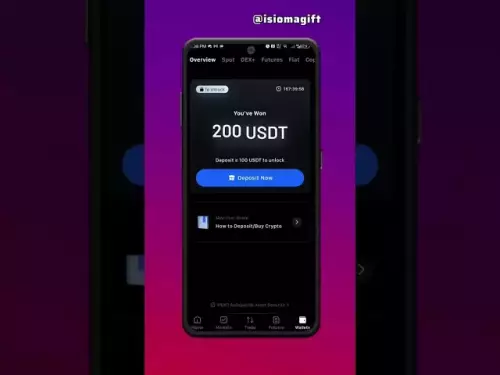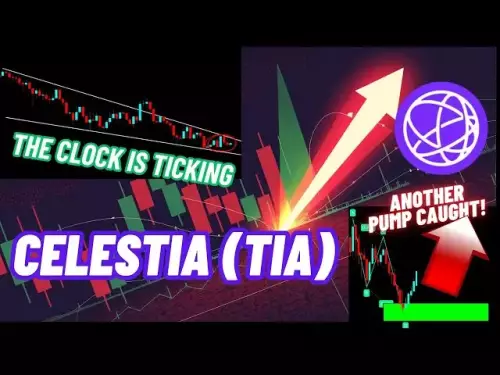-
 Bitcoin
Bitcoin $107300
-1.32% -
 Ethereum
Ethereum $4380
-1.98% -
 Tether USDt
Tether USDt $1.000
0.00% -
 XRP
XRP $2.727
-4.20% -
 BNB
BNB $850.6
-1.11% -
 Solana
Solana $197.2
-3.38% -
 USDC
USDC $0.9998
-0.01% -
 TRON
TRON $0.3374
-1.15% -
 Dogecoin
Dogecoin $0.2092
-4.52% -
 Cardano
Cardano $0.8020
-3.81% -
 Chainlink
Chainlink $22.91
-4.02% -
 Hyperliquid
Hyperliquid $44.07
-1.48% -
 Ethena USDe
Ethena USDe $1.001
0.02% -
 Sui
Sui $3.156
-5.18% -
 Stellar
Stellar $0.3471
-4.28% -
 Bitcoin Cash
Bitcoin Cash $531.1
-3.27% -
 Avalanche
Avalanche $23.00
-3.78% -
 Cronos
Cronos $0.2746
-5.59% -
 Hedera
Hedera $0.2139
-5.65% -
 UNUS SED LEO
UNUS SED LEO $9.621
0.49% -
 Litecoin
Litecoin $107.6
-3.31% -
 Toncoin
Toncoin $3.105
-1.06% -
 Shiba Inu
Shiba Inu $0.00001196
-3.99% -
 Polkadot
Polkadot $3.665
-4.49% -
 Uniswap
Uniswap $9.367
-5.19% -
 Dai
Dai $0.9999
-0.01% -
 Bitget Token
Bitget Token $4.521
-0.91% -
 Monero
Monero $266.2
2.25% -
 Aave
Aave $309.4
-4.42% -
 Ethena
Ethena $0.6316
-7.02%
How to use the MetaMask portfolio dashboard?
The MetaMask portfolio dashboard provides a unified view of crypto assets across multiple blockchains, supporting real-time tracking, NFT galleries, swaps, and integrations with DeFi analytics and tax tools.
Aug 31, 2025 at 10:18 am
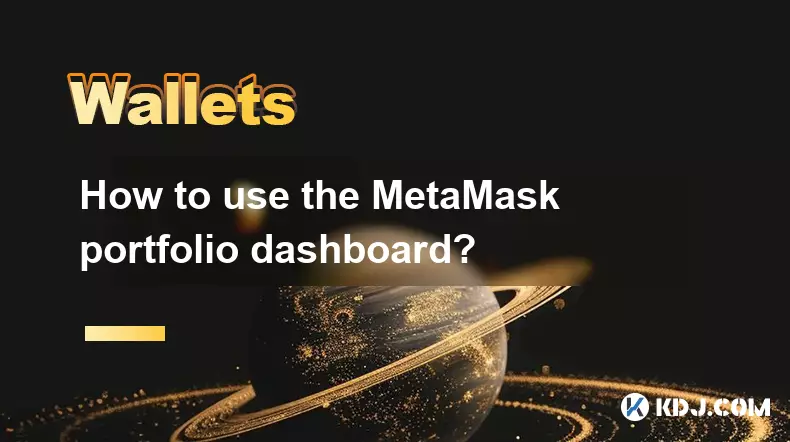
Understanding the MetaMask Portfolio Dashboard
1. The MetaMask portfolio dashboard serves as a centralized interface where users can monitor their cryptocurrency holdings across multiple blockchains. It aggregates data from Ethereum, Polygon, Binance Smart Chain, and other connected networks, offering a unified view of assets. This eliminates the need to switch between different network tabs to check balances.
2. Upon accessing the dashboard, users are presented with a summary of their total portfolio value, denominated in USD. The valuation is updated in real-time based on current market prices, providing accurate insight into net worth. Holdings are displayed as a list, showing token name, symbol, quantity, and individual value.
3. Each token entry includes interactive features such as price charts, historical performance, and links to blockchain explorers. Users can click on any asset to view transaction history or initiate actions like sending, swapping, or adding to watchlists. This level of interactivity enhances usability for both new and experienced users.
4. The dashboard supports custom filtering by network, token type (ERC-20, ERC-721, etc.), and balance thresholds. This allows traders and investors to focus on specific assets relevant to their strategy. For instance, filtering by NFTs reveals all non-fungible tokens held in the wallet.
5. Security remains a core component. The dashboard does not store private keys or transaction data on remote servers. All information is pulled directly from the blockchain using public APIs, ensuring that user privacy is maintained without compromising functionality.
Navigating Asset Management Features
1. Within the portfolio dashboard, users can manage their tokens by hiding insignificant balances or adding custom tokens not automatically detected. This is particularly useful when dealing with newly launched projects or obscure ERC-20 tokens. The 'Add Token' option allows manual input of contract addresses.
2. Real-time price alerts are accessible through integration with third-party services. While MetaMask itself does not offer native alerting, users can link their wallet to platforms that monitor portfolio changes and send notifications via email or mobile apps when thresholds are met.
3. Swapping tokens directly from the dashboard is streamlined through MetaMask Swap, which aggregates liquidity from various decentralized exchanges. Users can compare rates across providers, adjust slippage tolerance, and execute trades without leaving the interface. Fees are broken down before confirmation.
4. Transaction history is chronologically organized and categorized by type—transfers, approvals, swaps, and NFT interactions. Each entry includes the timestamp, counterparty address, gas fees paid, and status. Failed transactions are clearly marked, aiding in troubleshooting.
5. For users engaged in yield farming or staking, the dashboard displays token rewards earned over time. When connected to protocols like Aave or Uniswap, it reflects interest accruals and liquidity pool positions, enabling better financial tracking.
Integrating External Tools and Analytics
1. The MetaMask portfolio dashboard supports integration with analytics platforms such as Dune Analytics and Zapper.fi. By connecting the wallet, users gain access to advanced dashboards showing portfolio composition, historical returns, and exposure to specific DeFi protocols.
2. Tax reporting tools like Koinly and CoinTracker can import transaction data directly from the dashboard. This simplifies the process of calculating capital gains and losses across multiple jurisdictions, reducing manual entry errors.
3. Developers can leverage the MetaMask SDK to embed portfolio data into decentralized applications. This enables dApps to display user balances, approve spending limits, and trigger transactions based on real-time asset availability.
4. Multi-account management is supported through the use of wallet profiles. Users can switch between accounts within the same extension, each with its own portfolio view, transaction history, and token preferences. This is ideal for separating personal and investment wallets.
5. The dashboard automatically detects NFTs across connected chains and displays them in a dedicated gallery view. Users can view metadata, provenance, and floor prices directly within the interface, improving accessibility for digital collectibles.
Frequently Asked Questions
Can I track tokens from Layer 2 networks on the MetaMask portfolio dashboard?Yes, the dashboard supports assets on Layer 2 networks such as Arbitrum, Optimism, and zkSync when the corresponding network is added to the wallet. Balances and transaction history are displayed alongside mainnet assets.
Does the MetaMask portfolio show unrealized gains or losses?No, the dashboard does not calculate unrealized profits or losses. It displays current market value based on live prices but does not track purchase cost or historical entry points unless integrated with external tax tools.
Is it possible to export portfolio data for personal records?Users can export transaction history in CSV format through MetaMask’s activity tab. While the portfolio view itself cannot be exported as a snapshot, the transaction data contains all necessary details for external analysis.
Why are some of my tokens not appearing in the portfolio?Tokens may not appear if they are not ERC-20 compliant, have incorrect contract addresses, or belong to a network not currently enabled in the wallet. Manually adding the correct contract address usually resolves visibility issues.
Disclaimer:info@kdj.com
The information provided is not trading advice. kdj.com does not assume any responsibility for any investments made based on the information provided in this article. Cryptocurrencies are highly volatile and it is highly recommended that you invest with caution after thorough research!
If you believe that the content used on this website infringes your copyright, please contact us immediately (info@kdj.com) and we will delete it promptly.
- Memecoins September 2025 Watchlist: What's Hot Now?
- 2025-08-31 23:25:15
- Eric Trump Predicts Bitcoin to $1 Million: Hype or Reality?
- 2025-08-31 23:25:15
- BlockDAG: Redefining Scalability and ROI Potential in 2025
- 2025-08-31 23:05:16
- Ozak AI, Altcoins, and 20x Potential: Navigating the Crypto Landscape
- 2025-09-01 00:05:12
- Bonk Price, Solana Meme Coin, and the Rise of Layer Brett: A New Era?
- 2025-08-31 21:25:12
- ETH Transactions Soar, BTC Whale Shifts Gears: Decoding August's Crypto Charts
- 2025-08-31 21:05:16
Related knowledge

How to use Trust Wallet's built-in DEX?
Aug 29,2025 at 07:28am
Understanding Trust Wallet’s Built-in DEX1. Trust Wallet integrates a decentralized exchange (DEX) directly within its mobile application, allowing us...
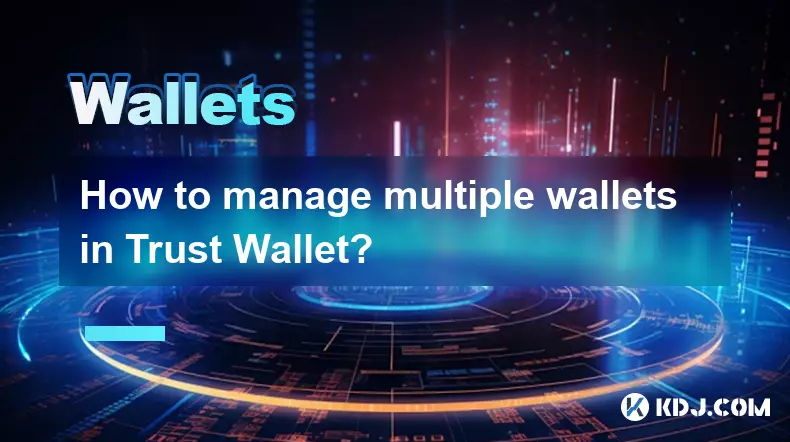
How to manage multiple wallets in Trust Wallet?
Aug 30,2025 at 04:45am
Understanding Wallet Management in Trust Wallet1. Trust Wallet supports a wide range of cryptocurrencies and tokens, allowing users to manage multiple...
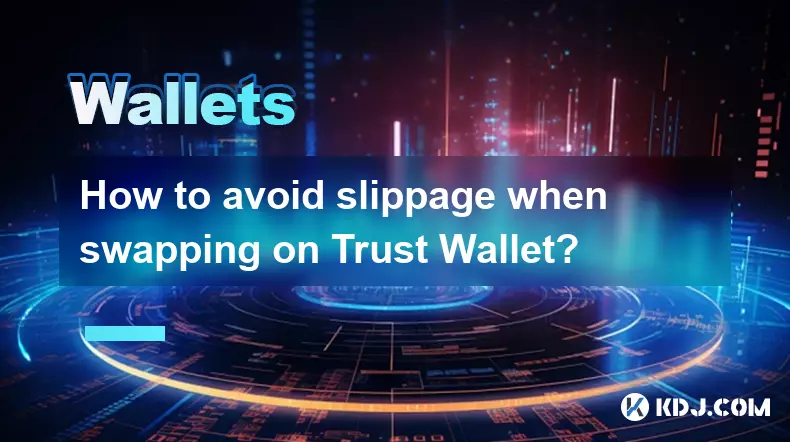
How to avoid slippage when swapping on Trust Wallet?
Aug 29,2025 at 03:01am
Understanding Slippage in Decentralized Exchanges1. Slippage occurs when the price of a cryptocurrency changes between the time a transaction is initi...
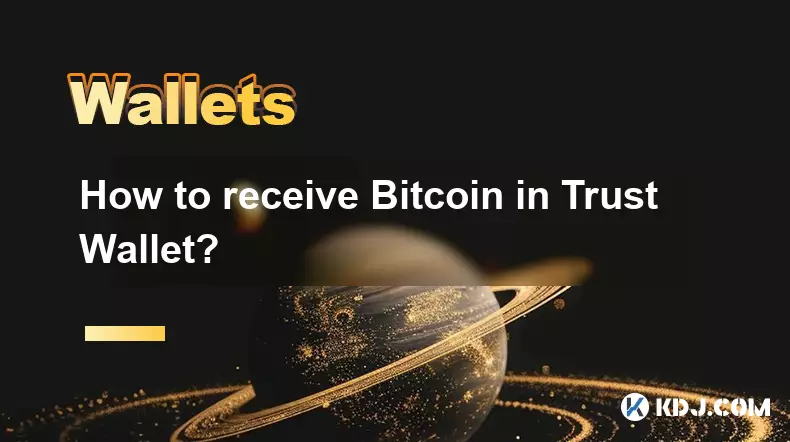
How to receive Bitcoin in Trust Wallet?
Aug 31,2025 at 08:36pm
Understanding Bitcoin Reception in Trust Wallet1. Trust Wallet supports Bitcoin (BTC) as one of its core cryptocurrencies. To receive Bitcoin, users m...
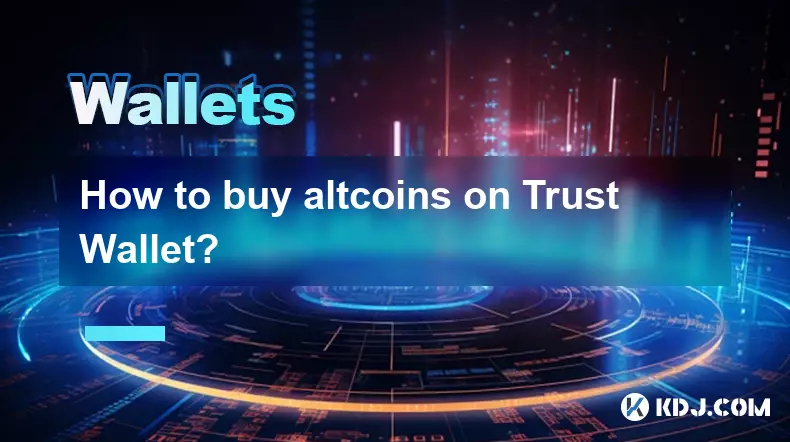
How to buy altcoins on Trust Wallet?
Aug 29,2025 at 11:36pm
Understanding Trust Wallet and Altcoin Purchases1. Trust Wallet is a non-custodial cryptocurrency wallet that supports a wide range of altcoins and bl...

How to participate in an ICO with Trust Wallet?
Aug 30,2025 at 04:36pm
Understanding ICOs and Trust Wallet Compatibility1. Initial Coin Offerings (ICOs) are fundraising mechanisms used by blockchain projects to raise capi...

How to use Trust Wallet's built-in DEX?
Aug 29,2025 at 07:28am
Understanding Trust Wallet’s Built-in DEX1. Trust Wallet integrates a decentralized exchange (DEX) directly within its mobile application, allowing us...

How to manage multiple wallets in Trust Wallet?
Aug 30,2025 at 04:45am
Understanding Wallet Management in Trust Wallet1. Trust Wallet supports a wide range of cryptocurrencies and tokens, allowing users to manage multiple...

How to avoid slippage when swapping on Trust Wallet?
Aug 29,2025 at 03:01am
Understanding Slippage in Decentralized Exchanges1. Slippage occurs when the price of a cryptocurrency changes between the time a transaction is initi...

How to receive Bitcoin in Trust Wallet?
Aug 31,2025 at 08:36pm
Understanding Bitcoin Reception in Trust Wallet1. Trust Wallet supports Bitcoin (BTC) as one of its core cryptocurrencies. To receive Bitcoin, users m...

How to buy altcoins on Trust Wallet?
Aug 29,2025 at 11:36pm
Understanding Trust Wallet and Altcoin Purchases1. Trust Wallet is a non-custodial cryptocurrency wallet that supports a wide range of altcoins and bl...

How to participate in an ICO with Trust Wallet?
Aug 30,2025 at 04:36pm
Understanding ICOs and Trust Wallet Compatibility1. Initial Coin Offerings (ICOs) are fundraising mechanisms used by blockchain projects to raise capi...
See all articles























